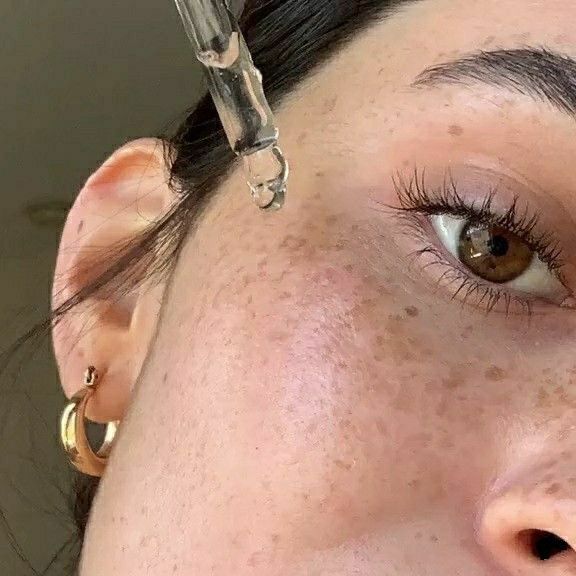By Kat Sarmiento
Almost everyone knows that beauty isn’t skin-deep. We’ve been taught all our lives not to judge people based on how they look. However, there’s much to be said about having an attractive appearance. Our looks can have a considerable impact on how people perceive our overall health, which draws them to us. And part of the attraction is great-looking skin.
Perhaps you’re trying to find ways to achieve clear skin that’s healthy and glowing. The problem is there’s so much information out there that it can be pretty confusing. For instance, one frequently asked question is about which beauty product to use on one’s face. Beauty gurus may harp on the benefits of using facial serums. Other experts may extoll the virtues of facial moisturizers. So which one do you use? More importantly, what’s the difference between a facial serum and a facial moisturizer? In this article, we’ll break down the differences for you so you can be guided on your choice of beauty product.

Key Differences Between Facial Serums and Facial Moisturisers:
Main Ingredients
The most crucial differentiator of the two products is “what isn’t there.” Compared to moisturizers for the face, serums have a lighter, non-greasy finish. This is because the former, unlike the latter, do not have emollient or occlusive ingredients and eliminate any kind of oil altogether. However, they share several common ingredients (such as the antioxidant vitamins C and E). Instead, humectants are the main components of serums.
The humectants in serums are moisturizing ingredients that fight off the drying effects of harsher products like soap and alcohol. They do this by attracting water molecules from the air and drawing them into the outer layer of the skin.
Some of the most popular humectants are hyaluronic acid and glycerin. Other examples of humectants are retinol, Alpha Hydroxy Acids, DMAE, the amino acids called peptides, and Alpha Lipoic Acid.
On the other hand, moisturizers have a thicker formulation because of the emollients and occlusives that they typically contain. Although they both contain oil or oil-based ingredients, each has a different function. Emollients, which are lipids, basically fill out dried-out spaces in your skin and work to repair broken skin barriers (that retain moisture and also protect the skin). They usually come in lotions, creams, ointments, and gels. Popular examples are shea butter, esters, fatty acids, and ceramides.
Occlusive ingredients are similar to emollients but have a thicker and heavier feel. They also play a different role, which is to create a protective physical barrier on the skin’s outermost layer. This air-tight shield prevents TEWL or trans-epidermal water loss. Occlusives have larger molecules and are not absorbed into the skin. Petrolatum, mineral oil, lanolin, and dimethicone, the silicone derivative, are some of the most common occlusives.
Specific Purposes:
Serums and their light humectant ingredients, in general, are best for oily skin and acne-prone skin. They can act as exfoliants that get rid of dead skin cells, so a fresher layer can surface. At the same time, serums can effectively treat sun damage and improve skin tone by evening out skin discoloration. The Hyaluronic Acid in serums is a go-to substance used in treating wrinkles and clogged skin. Alpha Hydroxy Acid enables the skin layers to effectively absorb moisture, making it a perfect anti-aging solution. The peptides in serums also restore collagen by promoting collagen synthesis.
The highly-concentrated potent substances in serums are made of microscopic particles that the skin can easily absorb. However, there is a caveat. Because the formulation of serums contains substances that are not oily, there is nothing that blocks the serums’ potency from deeply penetrating the skin. While it’s great that the potentially beneficial ingredients can instantly be imbibed by the skin, the same quick penetrating action of serums may cause skin irritation for individuals already suffering from chronic skin conditions, such as eczema or rosacea.
In addition, the liquid or gel-like consistency of the beauty product may not be moisturizing enough for people with prematurely aging or dry skin. What they can do is use a serum, then layer the moisturizer on top for a more intense softening application.
As to moisturizers, we mentioned earlier that both have thicker and heavier emollient or occlusive ingredients which create protective barriers. These block unwanted external elements, such as free radicals and toxins from environmental pollutants from going through the epidermis and damaging the skin. These barriers are also highly effective in locking moisture in keeping skin soft, smooth, and hydrated. This makes moisturizers more ideal for mature and dry skin. The disadvantage is that the same barriers can keep active ingredients out.
The Takeaway
Whether you should use facial serums or facial moisturizers depends on your skin type and specific needs. For instance, even if your skin is generally oily but tends to get dry during the winter, you may need to apply some moisturizer as an add-on to your serum. On the other hand, for dry types, some unique serum formulations may work without irritating the skin. Now, if your skin is especially sensitive, it would be best to see a dermatologist or skincare specialist who may recommend a combined formulation of both, so your skin can look and feel the best that it can be.
The content provided in this article is provided for information purposes only and is not a substitute for professional advice and consultation, including professional medical advice and consultation; it is provided with the understanding that Uptown Style (“Uptown Style”) is not engaged in the provision or rendering of medical advice or services. You understand and agree that Uptown Style shall not be liable for any claim, loss, or damage arising out of the use of, or reliance upon any content or information in the article.
